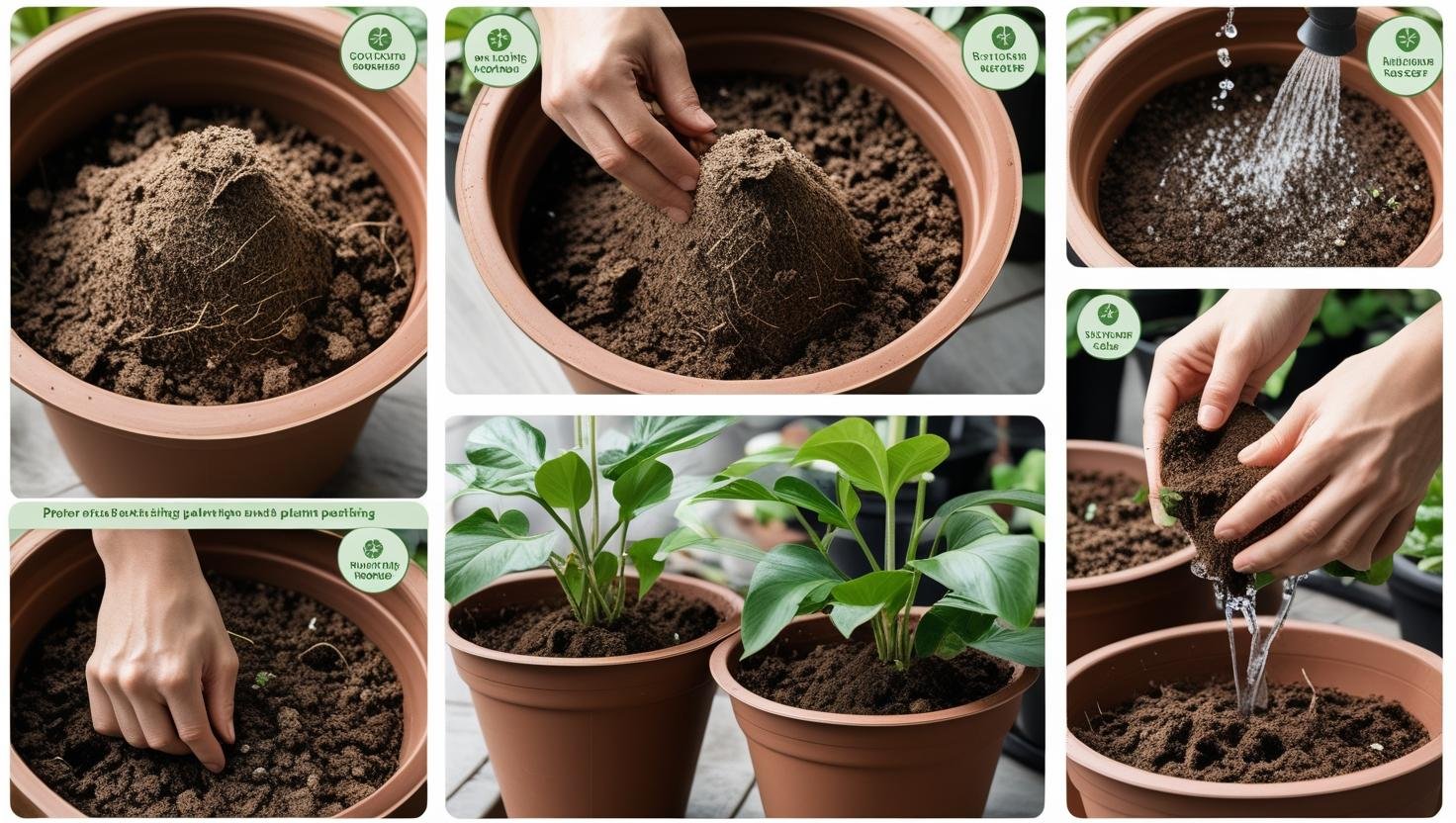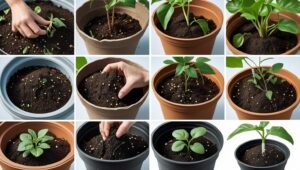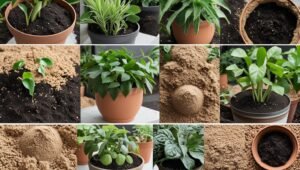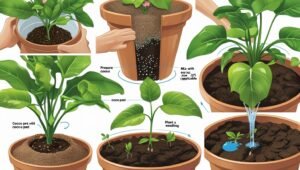
How to Use Coco Peat in Pots?
How to Use Coco Peat in Pots: The Complete Guide for Container Gardening Success
Coco peat, also known as coir pith or coconut fiber pith, has revolutionized container gardening by providing an exceptional growing medium that combines sustainability with superior plant performance. We’ll explore the comprehensive methods for utilizing this remarkable organic material in your potted plants, ensuring optimal growth conditions and thriving gardens.
Understanding Coco Peat: The Foundation of Successful Container Gardening

Coco peat is the fibrous byproduct extracted from coconut husks during coconut processing. This natural material possesses extraordinary water retention capabilities while maintaining excellent drainage properties, making it an ideal choice for pot gardening. The pH-neutral nature of coco peat, typically ranging from 5.5 to 6.8, creates perfect growing conditions for most plants.
The cellular structure of coco peat contains millions of microscopic air pockets that facilitate proper root aeration while retaining moisture efficiently. This unique characteristic eliminates the common problems associated with traditional potting soils, such as waterlogging or rapid moisture loss.
Preparing Coco Peat for Pot Applications
Hydrating Compressed Coco Peat Blocks
Most coco peat comes in compressed brick form, requiring proper hydration before use. We recommend following this systematic approach:
Place the compressed coco peat block in a large container and add warm water gradually. The typical expansion ratio is approximately 1:7, meaning one kilogram of compressed coco peat will expand to roughly seven liters of usable growing medium. Allow 30-45 minutes for complete hydration, stirring occasionally to ensure uniform moisture distribution.
Quality Assessment and Preparation
Examine the hydrated coco peat for any foreign materials or excessive salt content. High-quality coco peat should have a brown, fibrous appearance with minimal dust particles. If the material appears overly dusty, rinse it thoroughly with clean water until the runoff becomes clear.
Creating the Perfect Potting Mix with Coco Peat

Basic Coco Peat Potting Mix Formula
For general container gardening, we recommend this proven mixing ratio:
- 40% hydrated coco peat
- 30% quality compost or aged manure
- 20% perlite or vermiculite
- 10% coarse sand or small bark chips
This combination provides excellent drainage, water retention, and nutrient availability for most potted plants.
Specialized Mixes for Different Plant Types
Seedling Mix: Increase coco peat to 50% and add 25% vermiculite for enhanced moisture retention during the critical germination phase.
Flowering Plants Mix: Include 35% coco peat, 25% compost, 25% perlite, and 15% aged bark for improved drainage and root development.
Vegetable Container Mix: Combine 45% coco peat with 35% rich compost and 20% perlite to support heavy feeding requirements.
Step-by-Step Guide to Using Coco Peat in Pots

Container Selection and Preparation
Choose pots with adequate drainage holes to prevent water stagnation. The container size should accommodate the plant’s root system with 2-3 inches of growing space around the perimeter. Clean all containers thoroughly with a mild bleach solution to eliminate potential pathogens.
Layering Technique for Optimal Results
Begin with a thin layer of coarse material like broken pottery shards or small stones at the pot’s bottom. This drainage layer prevents coco peat from blocking drainage holes while allowing excess water to escape freely.
Fill the container with your prepared coco peat mixture, leaving approximately one inch of space below the rim. Gently firm the growing medium without compacting it, maintaining the natural aeration properties that make coco peat so effective.
Plant Installation Process
Create a planting hole slightly larger than the plant’s root ball. Position the plant at the same depth it was growing previously, ensuring the root collar sits at soil level. Backfill with the coco peat mixture, gently pressing around the roots to eliminate air pockets while maintaining soil structure.
Watering Techniques for Coco Peat Container Gardens
Understanding Moisture Management
Coco peat’s exceptional water-holding capacity requires modified watering practices compared to traditional potting soils. The material can retain water for extended periods while still providing adequate drainage when properly mixed.
Monitor soil moisture by inserting your finger 1-2 inches deep into the growing medium. Water thoroughly when the top inch feels dry, allowing water to drain from the bottom holes. This deep watering technique encourages robust root development throughout the container.
Seasonal Watering Adjustments
During hot summer months, coco peat containers may require daily watering, especially for plants in full sun locations. Winter watering frequency should be reduced significantly, as the material’s moisture retention properties prevent rapid drying.
Fertilization Strategies for Coco Peat Growing Systems
Understanding Nutrient Requirements
Pure coco peat contains minimal nutrients, making regular fertilization essential for plant health. The material’s high cation exchange capacity allows it to hold and release nutrients effectively when properly managed.
Apply a balanced, water-soluble fertilizer every 2-3 weeks during the growing season. We recommend using fertilizers with NPK ratios of 20-20-20 or 15-15-15 for general applications, adjusting based on specific plant requirements.
Organic Fertilization Options
Incorporate slow-release organic fertilizers into your coco peat mixture during initial preparation. Fish emulsion, kelp meal, and composted manure provide steady nutrient release while supporting beneficial microbial activity within the growing medium.
Maintaining Coco Peat Container Gardens
Long-term Soil Health Management
Coco peat maintains its structure and properties for multiple growing seasons with proper care. Add fresh compost annually to replenish organic matter and maintain nutrient levels. The material’s resistance to decomposition makes it an economical choice for long-term container gardening.
Troubleshooting Common Issues
Salt accumulation can occur over time, particularly in areas with hard water. Flush containers monthly with distilled water to prevent salt buildup that could harm plant roots. If plants show signs of nutrient deficiency despite regular fertilization, increase feeding frequency rather than concentration.
Advanced Applications and Specialized Uses
Hydroponic Integration
Coco peat serves as an excellent soilless growing medium for hydroponic systems. Its sterile nature and consistent texture make it ideal for automated watering systems and intensive growing operations.
Seed Starting Applications
The fine texture and moisture retention properties of coco peat create optimal conditions for seed germination. Mix equal parts coco peat and vermiculite for a superior seed starting medium that promotes rapid, uniform germination rates.
Environmental Benefits and Sustainability
Using coco peat in container gardening supports environmental sustainability by utilizing a renewable waste product that would otherwise require disposal. The material’s longevity reduces the need for frequent potting mix replacement, minimizing environmental impact while maintaining superior growing conditions.
The natural properties of coco peat eliminate the need for peat moss harvesting, protecting sensitive bog ecosystems while providing gardeners with a superior alternative that offers enhanced performance characteristics.
Coco peat represents the future of sustainable container gardening, combining environmental responsibility with exceptional plant performance. By following these comprehensive guidelines, we can achieve remarkable results in our potted gardens while contributing to environmental conservation efforts.
